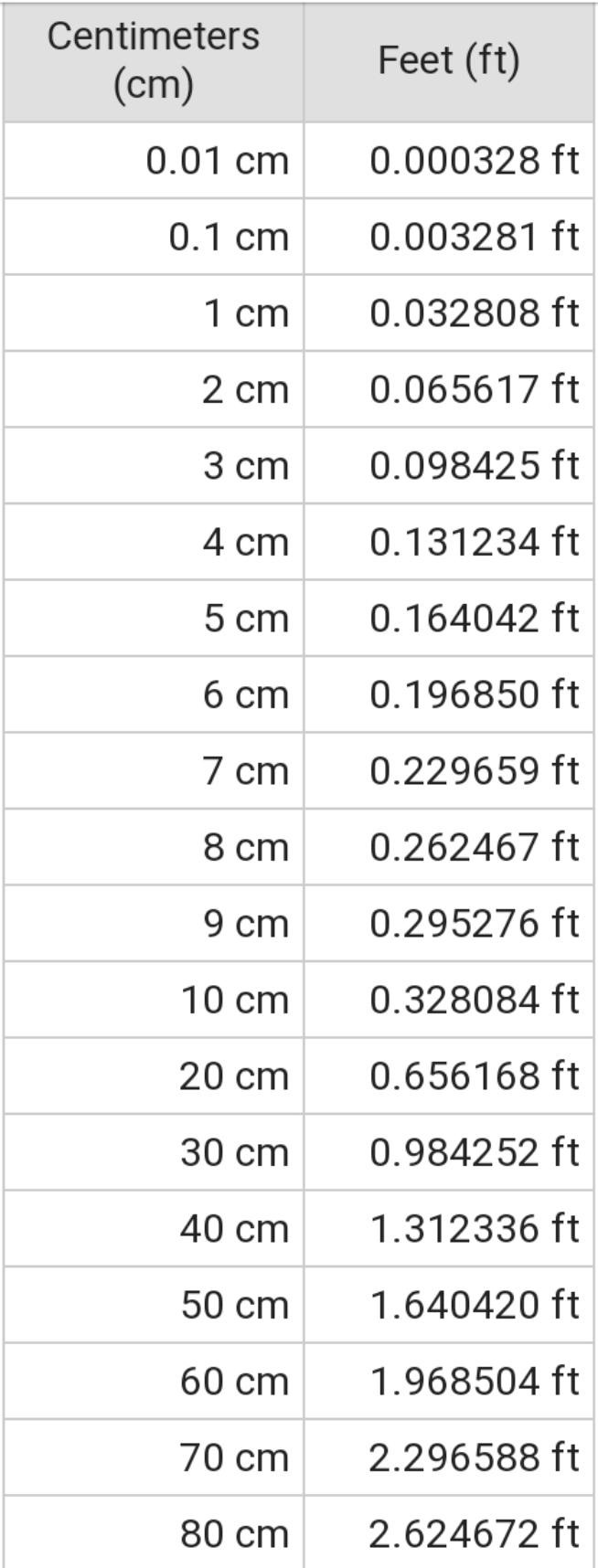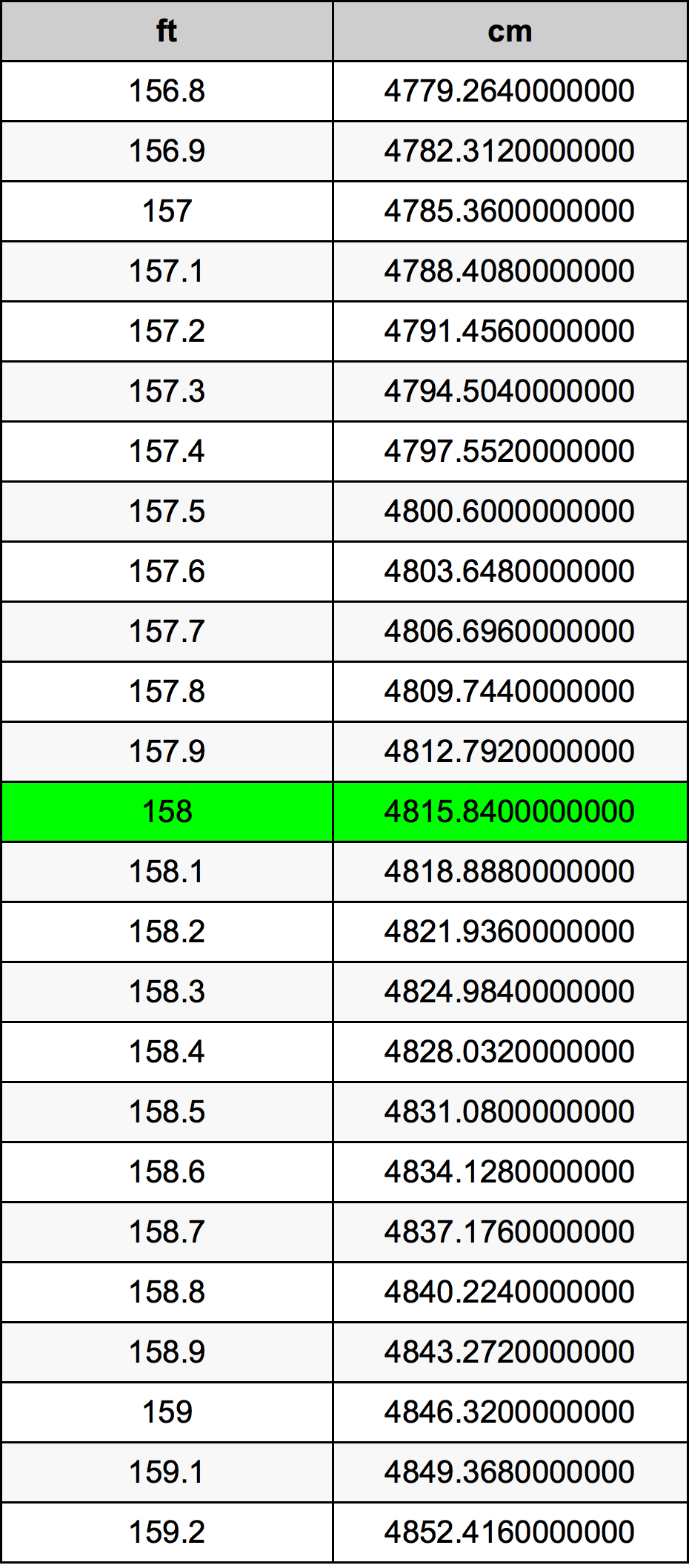Ever wondered exactly how your height stacks up in different units? Knowing your height in both metric and imperial units is more than just a matter of curiosity; it's a practical necessity in a globalized world.
When someone asks, "How tall is 158 centimeters?", the answer isn't always straightforward, especially if you're used to feet and inches. This seemingly simple question unveils a world of unit conversions, offering a glimpse into the interplay between different measurement systems. Let's delve into the specifics, exploring how 158 centimeters translates into the more familiar feet and inches, as well as its equivalent in meters.
| Category | Information |
|---|---|
| Conversion | 158 centimeters = 1.58 meters = Approximately 5 feet and 2.2 inches = 62.20 inches |
| Formula (cm to feet) | feet = centimeters / 30.48 |
| Formula (cm to meters) | meters = centimeters / 100 |
| Importance | Essential for international communication, understanding product dimensions, and health-related contexts |
| Reference | National Institute of Standards and Technology (NIST) |
The metric system, with its base-10 structure, makes conversions relatively simple. To convert 158 centimeters to meters, you divide by 100. Thus, 158 cm equals 1.58 meters. This conversion is straightforward and easily understood due to the inherent decimal nature of the metric system.
- Johnny Somali Controversy Biography And Reactions Latest News
- Before Surgery The Untold Story Of Ms Sethis Journey Discover Now
Converting centimeters to feet and inches, however, involves a slightly more complex process. One centimeter is approximately equal to 0.0328084 feet. Therefore, 158 centimeters is equal to 158 multiplied by 0.0328084, which results in approximately 5.1837 feet. Now, the decimal part of this result needs to be converted to inches. To do this, we take 0.1837 and multiply it by 12 (since there are 12 inches in a foot). This gives us approximately 2.2 inches. Therefore, 158 centimeters is approximately 5 feet and 2.2 inches.
For those accustomed to inches only, the conversion is even more direct. Since 1 inch is equal to 2.54 centimeters, we divide 158 by 2.54, resulting in approximately 62.20 inches. This figure provides a clear understanding of the length when expressed solely in inches.
It's crucial to understand the rationale behind these conversions. The metric system, widely used around the world, offers simplicity and consistency. However, in countries like the United States, the imperial system, with its feet and inches, remains prevalent in everyday life. Consequently, knowing how to convert between these systems is essential for clear communication and understanding measurements in various contexts.
- Discover Luke Roberts Bio Movies More The Actor From Holby City Game Of Thrones
- Dana Perinos Husband Peter Mcmahon Their Love Story
Let's break down the mathematics further. The fundamental conversion factor between centimeters and feet is that 1 centimeter equals 0.032808399 feet. Conversely, 1 foot equals 30.48 centimeters. To determine how many feet are in 158 centimeters, we divide 158 by 30.48. The result, as previously stated, is approximately 5.1837 feet. This number represents the whole number of feet (5) plus a decimal portion representing a fraction of a foot.
To express this fraction of a foot in inches, we multiply the decimal portion (0.1837) by 12, since there are 12 inches in a foot. The result is approximately 2.2047 inches. Rounding to the nearest tenth of an inch, we get 2.2 inches. Thus, 158 centimeters is equivalent to 5 feet and 2.2 inches.
These conversions are not merely academic exercises. They are practical tools in various fields. In healthcare, accurate height measurements are crucial for calculating body mass index (BMI) and determining appropriate dosages of medication. In fashion, knowing your height in both centimeters and feet/inches is essential for tailoring clothing and ensuring a proper fit. In construction and design, accurate conversions are critical for ensuring that structures and spaces are built to the correct dimensions.
Moreover, the ability to convert between metric and imperial units is increasingly important in a globalized world. When ordering products online from international vendors, understanding the dimensions provided in centimeters and converting them to feet and inches is crucial for making informed purchasing decisions. Similarly, when traveling to countries that use the metric system, knowing your height in centimeters can be helpful in various situations, from renting equipment to understanding health-related information.
The use of online calculators and conversion tools can simplify these processes, but understanding the underlying principles is still valuable. Knowing how the conversions are performed allows you to verify the results and avoid potential errors. Additionally, it fosters a deeper understanding of the relationship between different measurement systems.
Now, let's consider the scenario where you want to convert 1.58 meters to feet. Since 1 meter is approximately 3.28084 feet, we multiply 1.58 by 3.28084. This yields a result of approximately 5.1837 feet. Again, this underscores the importance of understanding conversion factors and their applications.
To further illustrate the concept, let's convert 15 centimeters to feet. Using the conversion factor of 0.0328084 feet per centimeter, we multiply 15 by 0.0328084, resulting in approximately 0.4921 feet. This demonstrates the application of the conversion factor across different magnitudes of measurement.
Understanding these conversions can also help you interpret measurements in various contexts. For example, if a product description states that an item is 158 centimeters tall, you can quickly visualize its approximate height in feet and inches, allowing you to make a more informed assessment of whether the product meets your needs.
The ability to convert between centimeters, feet, and inches also plays a role in understanding historical contexts. Many historical records and documents use imperial units, even in countries that now predominantly use the metric system. Understanding these units and how they relate to metric units allows you to better interpret these historical sources.
Furthermore, understanding unit conversions can enhance your problem-solving skills. By understanding the relationship between different units, you can solve a wide range of practical problems, from calculating the amount of fabric needed for a project to determining the volume of liquid in a container.
In summary, knowing how to convert between centimeters, feet, and inches is a valuable skill that has practical applications in a wide range of fields. Whether you're a healthcare professional, a fashion designer, a construction worker, or simply a curious individual, understanding these conversions can enhance your ability to communicate effectively, solve problems, and navigate a globalized world. The seemingly simple question of "How tall is 158 centimeters?" opens a door to a deeper understanding of measurement systems and their importance in our daily lives.
The conversion process itself is a testament to the enduring relevance of both metric and imperial systems. While the metric system offers simplicity and ease of calculation, the imperial system remains deeply ingrained in certain cultures and industries. Mastering the art of conversion allows you to bridge the gap between these systems and navigate a world where both are widely used. In essence, it empowers you to speak the language of measurement, regardless of the dialect.
Moreover, with readily available online converters, the process of conversion is even easier. These tools offer instant results, eliminating the need for manual calculations. However, understanding the underlying principles remains crucial, ensuring that you can interpret and verify the results generated by these tools. By combining knowledge with technology, you can confidently navigate the world of measurement, regardless of the units employed.
Finally, let's not forget the importance of precision. While approximations are often sufficient for everyday purposes, accurate conversions are essential in many fields, particularly in science and engineering. Using the appropriate conversion factors and paying attention to significant figures can ensure that your measurements are precise and reliable. In a world where accuracy is paramount, mastering the art of unit conversion is a skill that will serve you well.



Detail Author:
- Name : Ms. Heath Abshire
- Username : marlin.barrows
- Email : labadie.jeromy@kihn.com
- Birthdate : 1985-02-07
- Address : 25392 Kovacek Rest Apt. 987 Kaylieshire, AZ 99275-0912
- Phone : +1-715-650-7169
- Company : Rolfson-Towne
- Job : Health Specialties Teacher
- Bio : Voluptates deserunt pariatur dignissimos voluptatibus quaerat amet sint expedita. Eos et ducimus excepturi iusto iusto eos.
Socials
tiktok:
- url : https://tiktok.com/@darianarosenbaum
- username : darianarosenbaum
- bio : Illo ipsam similique dolor.
- followers : 925
- following : 2503
facebook:
- url : https://facebook.com/rosenbaum1982
- username : rosenbaum1982
- bio : Assumenda voluptatem neque quibusdam aspernatur aut esse molestiae.
- followers : 1819
- following : 1890
linkedin:
- url : https://linkedin.com/in/dariana9415
- username : dariana9415
- bio : Eius voluptas blanditiis ea accusamus a.
- followers : 3450
- following : 1733